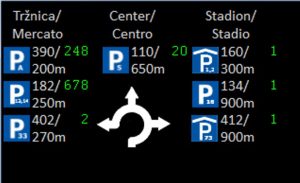Discovering Slovenia’s measures in favour of sustainable urban mobility
 Study tours in Koper and Ljubljana to discover Slovenia’s measures in favour of sustainable urban mobility were organised last 22nd and 23rd May by the Med Urban Transport Community (UTC). This Community is animated by the Interreg Med project GoSUMP of which CODATU is a partner. It aims to create synergies between the stakeholders, to capitalise the results of the sustainable mobility projects of the Interreg MED programme and to showcase good practices.
Study tours in Koper and Ljubljana to discover Slovenia’s measures in favour of sustainable urban mobility were organised last 22nd and 23rd May by the Med Urban Transport Community (UTC). This Community is animated by the Interreg Med project GoSUMP of which CODATU is a partner. It aims to create synergies between the stakeholders, to capitalise the results of the sustainable mobility projects of the Interreg MED programme and to showcase good practices.
This study tour was an opportunity to test in real scale some pilots regarding ICT tools implemented in Koper, by SUMPORT, one of the projects of the Med UTC. Attendees were urban transport practitioners, especially from Prilep, Macedonia, which is willing to develop its very first Sustainable Urban Mobility Plan (SUMP). This study tour was organized by the “Green Karst” and “Ljubljana Urban Region” Regional Development Agencies (RDA) and moderated by Janez Nared, from the ZRC SAZU Anton Melik Geographical Institute and coordinator of the SMART-MR project.
Slovenian successful approach to generalize Sustainable Urban Mobility Planning
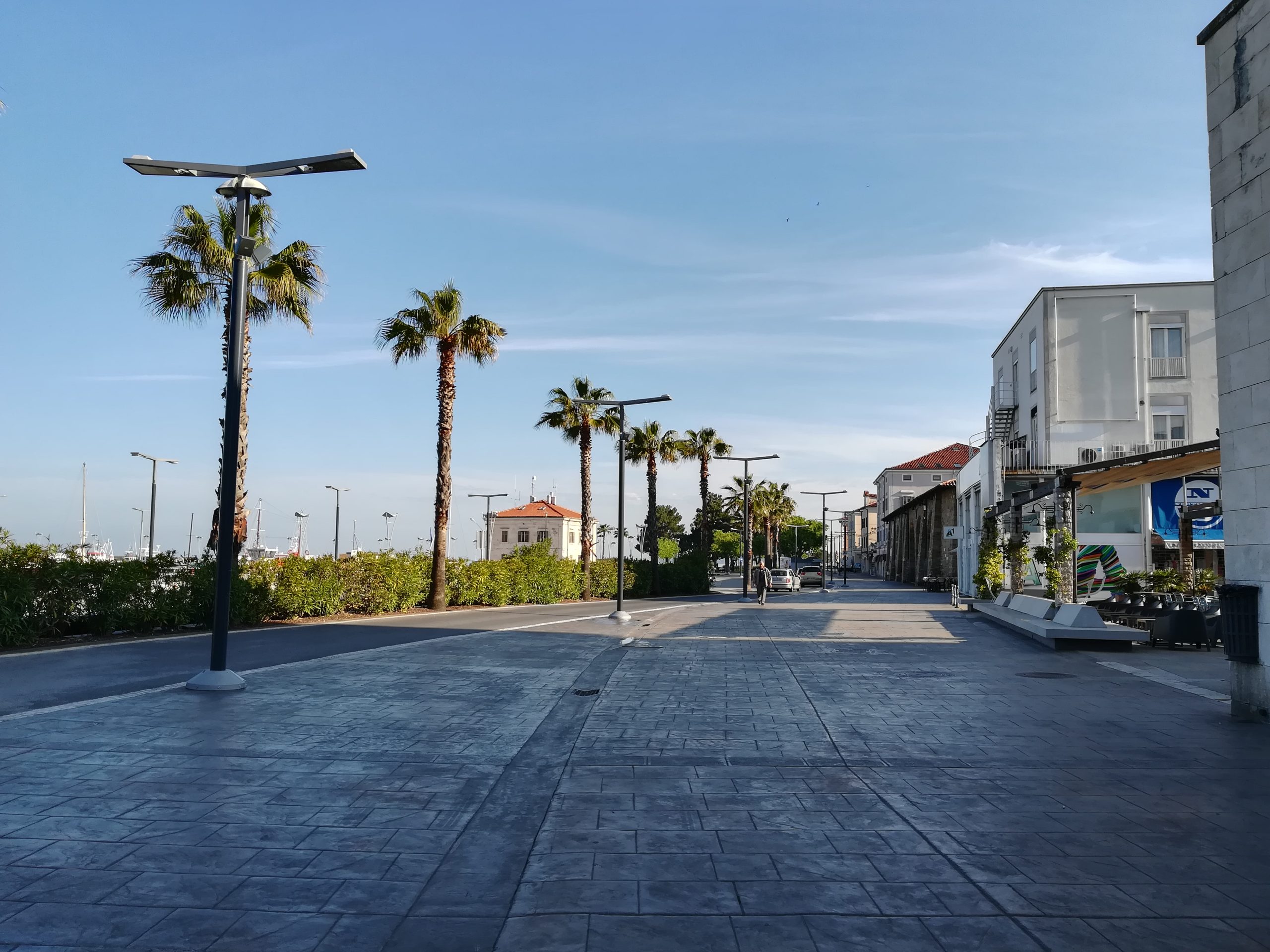 Polona Demsar Mitrovic, from the Slovenian Ministry of Infrastructure, presented the national support for sustainable urban mobility planning in Slovenia. Developing a SUMP is not mandatory in Slovenia. Instead, the Slovenian Ministry of Infrastructure has produced national guidelines and offer funding to cities willing to develop their SUMP (following the guidelines). This incentive approach (combined with trainings and animation) is a success as there are currently 77 municipalities (of 212) with SUMPs.
Polona Demsar Mitrovic, from the Slovenian Ministry of Infrastructure, presented the national support for sustainable urban mobility planning in Slovenia. Developing a SUMP is not mandatory in Slovenia. Instead, the Slovenian Ministry of Infrastructure has produced national guidelines and offer funding to cities willing to develop their SUMP (following the guidelines). This incentive approach (combined with trainings and animation) is a success as there are currently 77 municipalities (of 212) with SUMPs.
It is interesting to notice that Slovenia’s SUMP guidelines are not only a translation of the EU SUMP guidelines, but they were adapted to the need of Slovenian cities whose specificity it to be only small or medium cities. Thanks to these guidelines and their 4 steps approach, all the Slovenian SUMPs are comparable between them.
The main lesson learned concerns the scale of the SUMP: in Slovenia, SUMP perimeter is the municipality whereas the functional area is sometime bigger. For example, Koper SUMP should have included also Izola and Piran but funding would have been twice as small for a perimeter twice as large. Thus, a new regional level for SUMP is now promoted.
Finally, for the Ministry of Infrastructure, the main priorities for the next 5 years are:
- Preparation of SUM legislation.
- Ensuring regular national funding.
- Introduction of regional SUMPs.
- Development of SUMP quality control (content).
- Improvement of inter-sectoral cooperation.
- Preparation of topical guidelines
From mobility to smart mobility in Koper (Slovenia): a user-oriented approach in a multi-operators context
Ivana Štrkalj, from the Municipality of Koper (SUMPORT project) presented the Koper Smart Mobility Strategy. Indeed, Koper Municipality, is implementing step by step, its Smart Mobility Strategy, with a very practical approach and a strong vision. It is interesting to notice that Koper has developed its SUMP in a one-year timeframe, by need (especially due to the port activities nuisances), well before the Slovenian guidelines and incitation to develop one.
With the support of Interreg MED Program, the Municipality of Koper implements a user-oriented approach to give citizens real-time information to optimize their travel. The Municipality is upgrading the existing Transport Information Centre to better monitor and manage urban mobility but also to provide useful information to citizens. Users can access to this information via web and mobile applications but also on LED displays on bus stops, multimodal knots and streets.
The Municipality of Koper is able to provide information for all transport modes (traffic congestion, urban & suburban Public Transport tracking, parking fill rate, etc.), thanks to the installation of (i) bus trackers, (ii) sensors for counting traffic (vehicles, pedestrians and cyclists), (iii) parking lot occupancy counters, (iv) data centralisation by the Transport Information Centre, and dissemination through an integrated application and information panels. Thanks to this new service, it is now easier to plan a trip using Public Transport or to find a free parking space. By reducing congestion and facilitating the use of public transport, the program is expected to have a positive environmental impact.
Here are some challenges encountered during implementation of Koper Smart Mobility Strategy:
- Public authorities are still not aware of the importance to get data and to integrate them;
- The Municipality do not rule the suburban buses, but they manage to get real-time data by installing GPS on board.
 After a tour in the city centre of Koper to see the solutions implemented, attendees have been able to visit the Traffic Information Centre MOK (for “Municipality of Koper”), hosted by Robotina, a firm developing smart cities solutions in Kozina, a small city near Koper. Ljubljana has also its own Traffic Information Centre, but not other Slovenian cities have one. These two local Traffic Information Centres exchange data with the National one.
After a tour in the city centre of Koper to see the solutions implemented, attendees have been able to visit the Traffic Information Centre MOK (for “Municipality of Koper”), hosted by Robotina, a firm developing smart cities solutions in Kozina, a small city near Koper. Ljubljana has also its own Traffic Information Centre, but not other Slovenian cities have one. These two local Traffic Information Centres exchange data with the National one.
Counter of bikes, cars, pedestrians
Ljubljana, a cyclist and pedestrian friendly city
Klemen Gostic, from Regional Development Agency of Ljubljana Urban Region (LUR), presented the SUMP of LUR. Many SUMPs at the level of Municipality have been adopted in Slovenia so the challenge here was to adapt the perimeter of the SUMP to the functional area of Ljubljana.
Then, Matic Sopotnik from the City of Ljubljana presented the City’s activities for Urban Sustainability. According to its core document “Ljubljana 2025”, the city priority is to be(come) a city that is friendly to people. Their iconic projects are the large pedestrian area since 2007 in the city centre (except deliveries from 6 to 10 am) and the refurbishment of Slovenska street, a main street of the city that was close to cars traffic. Basically, all the city centre is close for all motorized vehicles (130.000m²).
Other important sustainable mobility measures were implemented with success by the city:
- 6 e-minibus called “Kavalir” are available on-demand in the pedestrian area. Mainly for elderly and disabled people, they are free of charge;
- The self-service bicycle sharing system, called “Bicike(LJ)” is very well used;
- Citizen engagement and awareness raising events. For example, when the city closes a street to car, they put live in it by organising concerts, etc.
As a result of these sustainable mobility measures, Ljubljana is at the 8th place on the list of cyclist-friendly cities (Copenhagenize Index 2017). And Ljubljana will host Velo-City in 2020.
Nest step for Ljubljana is to better manage the 120 000 commuters who daily come to the city. They have developed Park & Ride (Bus) but they have to work with the surrounding areas, notably to implement Ljubljana Urban Region SUMP.
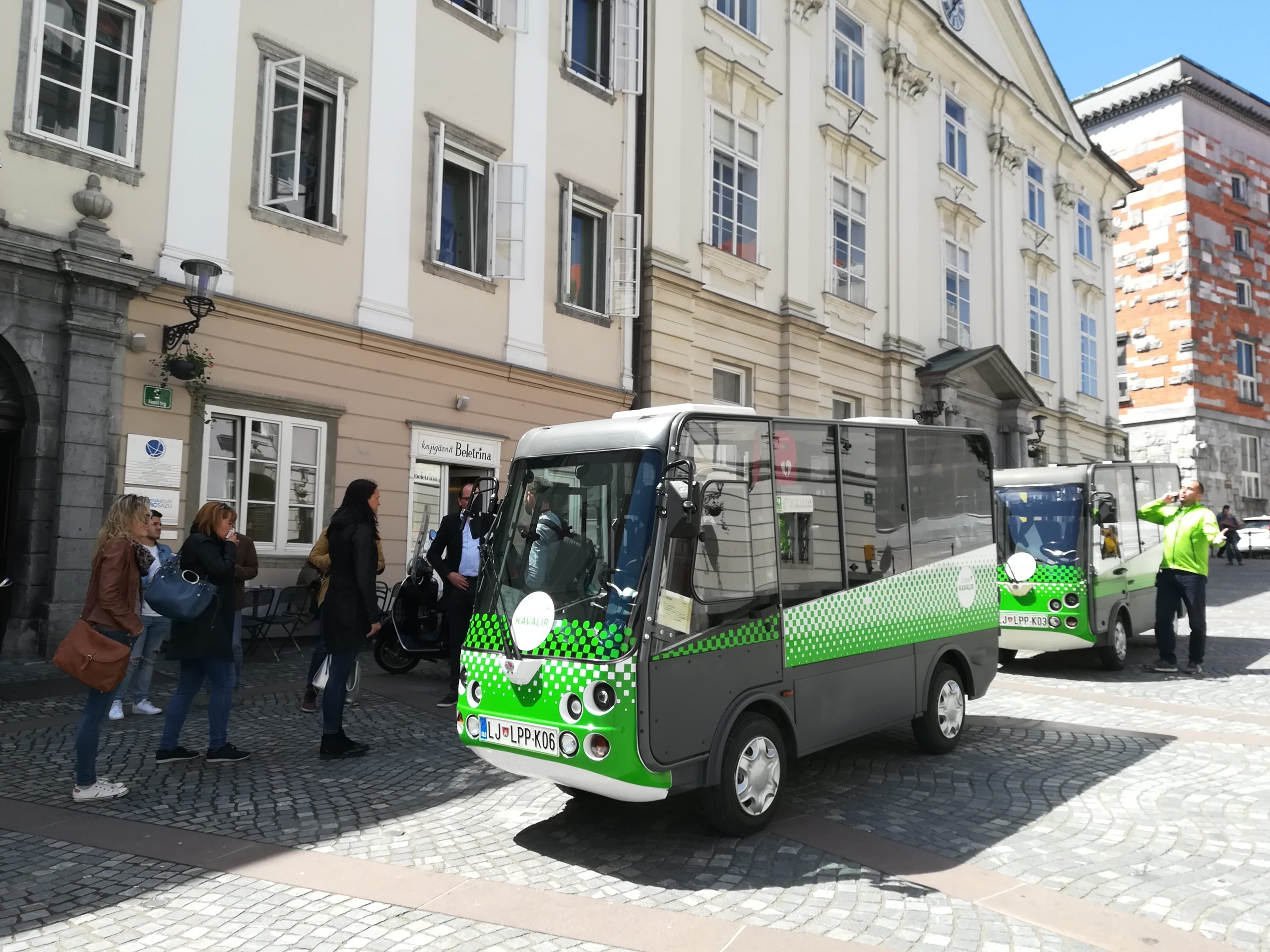
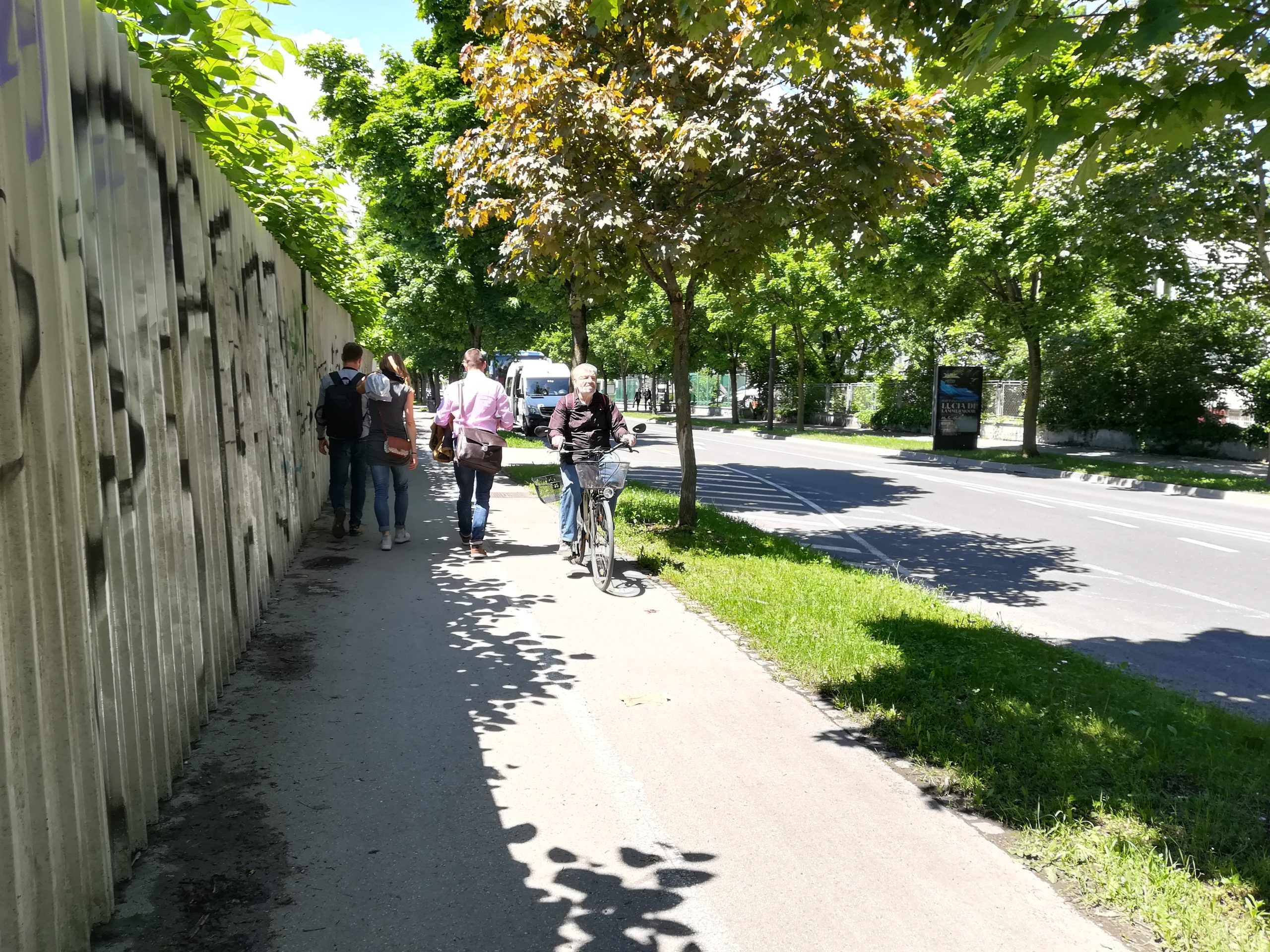
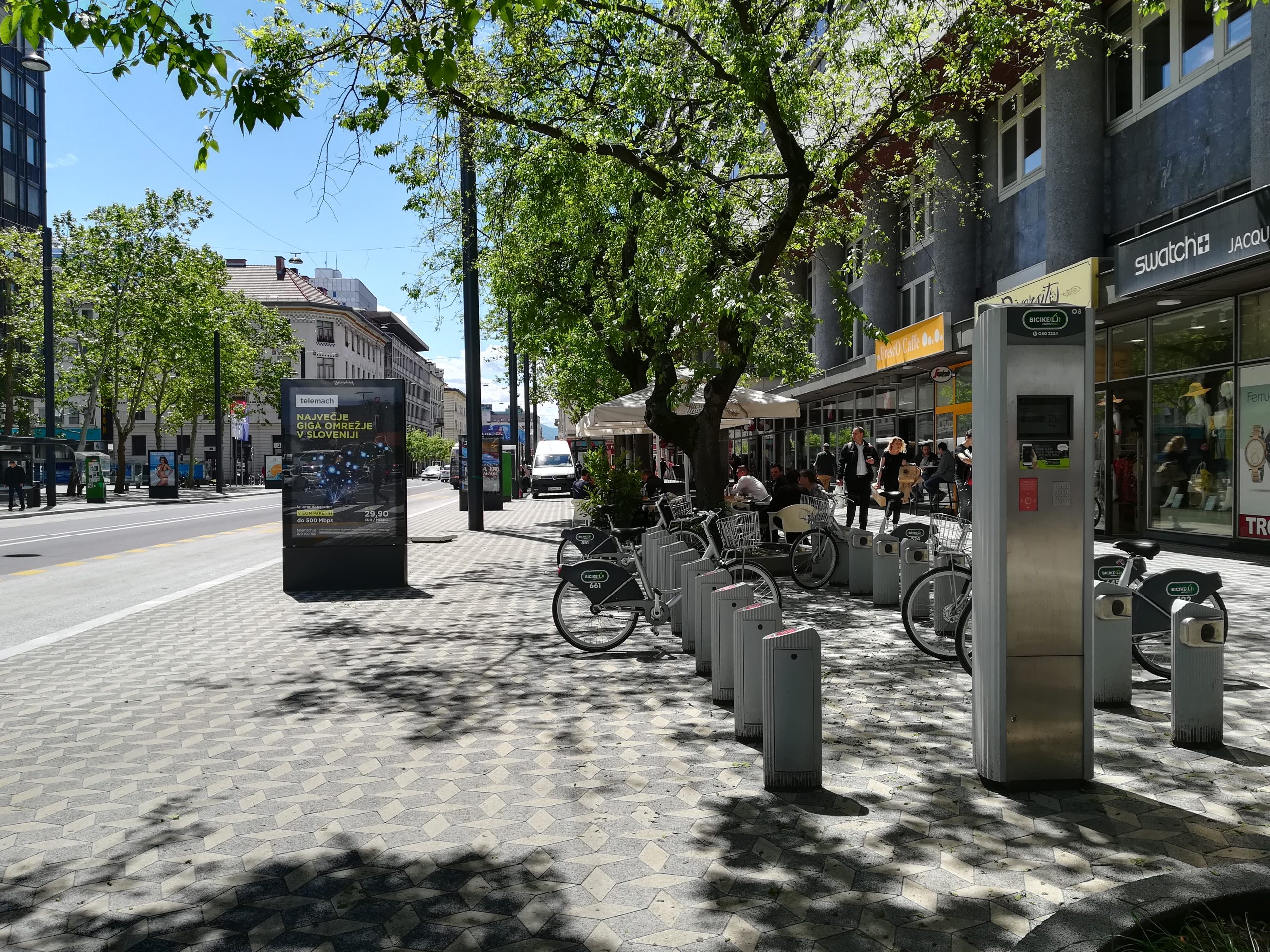
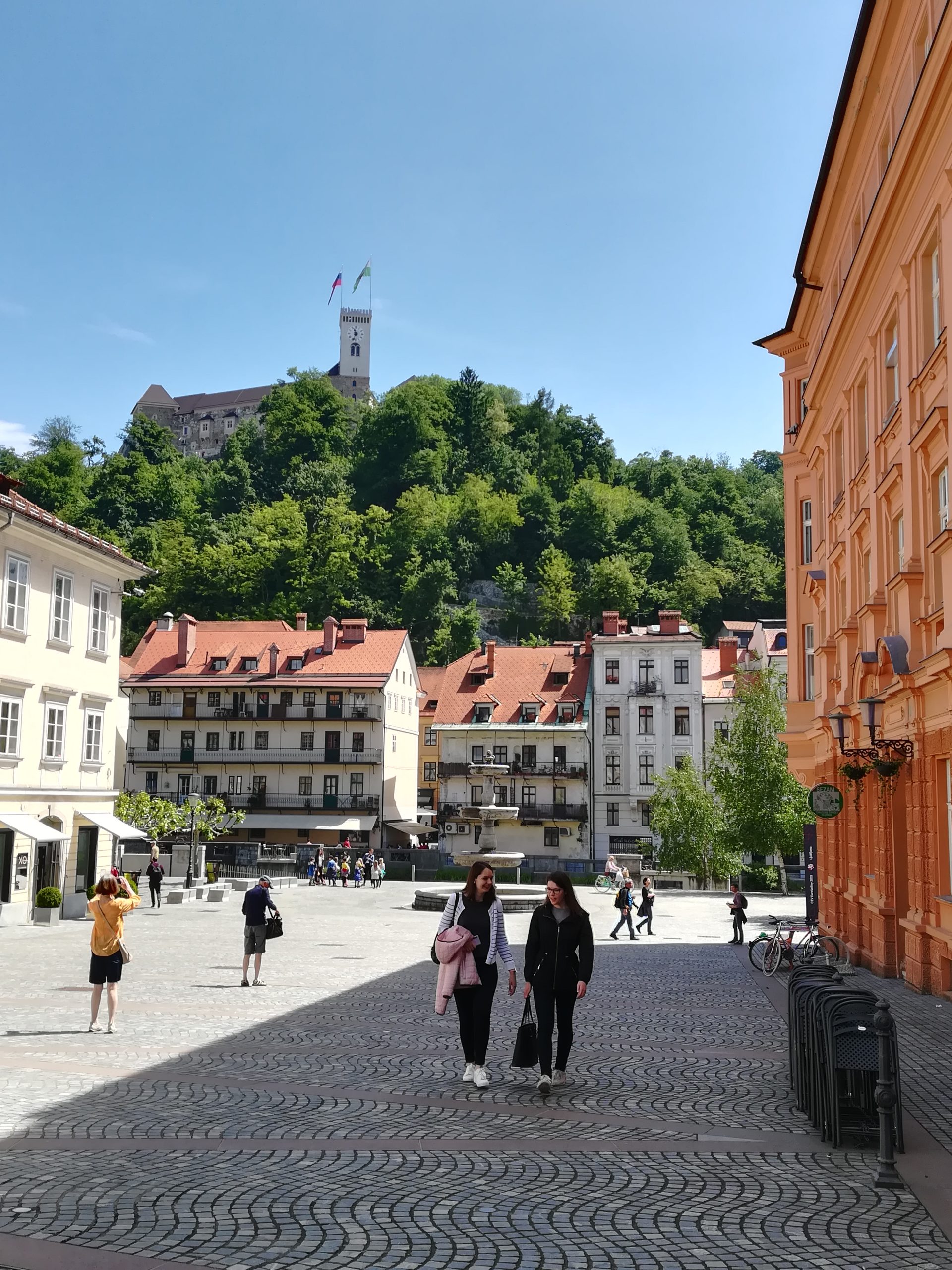 A visit of the city centre with Lea Rikato Ružič from Ljubljana Cyclists Network and Sabina Popit from the City of Ljubljana allows the participants to see the good (and less good) cycling lanes implemented and the operation of the pedestrian area.
A visit of the city centre with Lea Rikato Ružič from Ljubljana Cyclists Network and Sabina Popit from the City of Ljubljana allows the participants to see the good (and less good) cycling lanes implemented and the operation of the pedestrian area.
To conclude the study tour, a transfer session moderated by Janez Nared allows to identify the good practices seen that could be transferring to other cities and to eventually give advice to Koper and Ljubljana.
